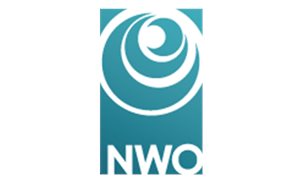11 May 2020
In the Journal of Controlled Release, Fang Yang, theme Reconstructive and regenerative medicine, and colleagues, have designed and formulated a tunable and injectable local delivery system by loading the PLGA-drug microspheres into the PIC hydrogel. This system exhibited appropriate injectability, long-term structural stability, and no obvious in vivo inflammatory response. Furthermore, the release of drugs could be controlled by adjusting the loaded mass ratio of acid- and ester- end capped PLGA microspheres.
As evidenced in these results, they envision that upon further optimization, this novel and simple thermo-responsive PLGA-PIC carrier system may have the potential to be translated as an effective therapy for penalized medicine in periodontal clinics.

In the Journal of Controlled Release, Fang Yang, theme Reconstructive and regenerative medicine, and colleagues, have designed and formulated a tunable and injectable local delivery system by loading the PLGA-drug microspheres into the PIC hydrogel. This system exhibited appropriate injectability, long-term structural stability, and no obvious in vivo inflammatory response. Furthermore, the release of drugs could be controlled by adjusting the loaded mass ratio of acid- and ester- end capped PLGA microspheres.
As evidenced in these results, they envision that upon further optimization, this novel and simple thermo-responsive PLGA-PIC carrier system may have the potential to be translated as an effective therapy for penalized medicine in periodontal clinics.
Related news items

Three Vici grants for Radboudumc researchers
20 February 2020 Christian Beckmann, Sander Leeuwenburgh and Annette Schenck each receive a 1.5 million euro Vici research grant from NWO. go to page
NWO grant to develop new biomaterials for improved regeneration of bone defects
20 August 2019 Sander Leeuwenburgh, theme Reconstructive and regenerative medicine, and Roland Brock, theme Nanomedicine, were recently awarded with a grant of 581 k€ by NWO, domain Applied & Engineering Sciences, to develop new biomaterials for improved regeneration of bone defects. go to page
H2020 Grant for Frank Walboomers and Ronald Bartels
23 May 2019 Frank Walboomers and Ronald Bartels, theme Reconstructive and regenerative medicine, have received a € 500,000 grant for research into graphene biomaterials from the Europan Union Horizon 2020 FET Open programme. go to page
Sónia Schickert represents the Netherlands at the XVI Conference of the European Ceramic Society
9 May 2019 Sónia Schickert, theme Reconstructive and regenerative medicine, will represent the Netherlands at the XVI conference of the European Ceramic Society in Torino, Italy. go to page
Toughened calcium phosphate bone cements using PVA Fibers
2 May 2019 Nathan Kucko and Sónia de Lacerda Schickert, and colleagues, published in ACS Biomaterials Science and Engineering that the incorporation of poly fibers in calcium phosphate bone cements substantially improves their strength and toughness while maintaining their ostecompatibility. go to page
